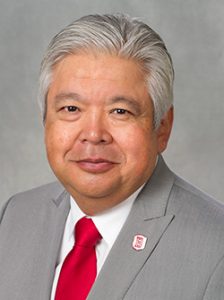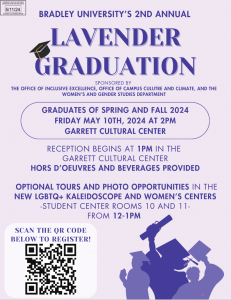Although there is a diverse amount of religious representation on campus, there was a time when religious involvement at Bradley was vastly different than today.
When the university was first founded in 1897 as the Bradley Polytechnic Institute, Lydia Moss Bradley established the university as secular, which it remains as today.
Even though Bradley has no official religious affiliation, the organizations that represent them developed regardless.
Jewish students attending Bradley in the ‘50s had one organization for their religion: Hillel. Christian students, on the other hand, had 10 to 12 organizations to choose from that were based on different denominations.
During that time, no other religions were represented by campus organizations apart from Christianity and Judaism.
Despite the limited representation, Bradley promoted its Interfaith Council in the ‘50s, in which two students from each religious organization were chosen as representatives to meet up with other religious group representatives.
The council existed “to promote and coordinate religious activities among students in planning events,” according to its description in the 1950 Bradley University Bulletin.
Though Interfaith Council does not exist anymore, the religious organizations still try to connect with one another to share their beliefs with students on campus through religious awareness events.
Seth Katz, executive director of Hillel, said the organization is successful in working with the Muslim Student Association (MSA) and is trying to include InterVarsity Christian Fellowship in future activities with MSA.
“We should have more interfaith stuff going on campus,” Katz said. “It’s very timely.”
Katz said Hillel and MSA have a common factor that helps their relationship with one another.
“One of the things that the growing positive relationship between Hillel and Muslim Student Association is built on is food,” Katz said. “If you can break bread with people, that’s a good thing.”
MSA marks one of the major changes between the ‘50s and present day. According to the university’s website, MSA not only tries to connect Muslim students together, but they also aim to “educate the broader campus about the Islamic tradition.”
Lamine Sadoun, MSA secretary, said he joined the organization after transferring to Bradley for his junior year and said Bradley is accepting toward his religion.
“I think this campus is pretty sympathetic toward people with different views and people with different world experiences, so there hasn’t really been an element of repression or anything like that,” Sadoun said.
Like Hillel, Sadoun said MSA has been trying to connect with more religious organizations on campus.
“[MSA makes] a big effort to reach out to the other faith groups on campus,” Sadoun said. “We’re having a dinner … between Hillel and InterVarsity, which is one of the Christian groups on campus, and, you know, we just want to have a platform for us to discuss our world views.”
MSA has already participated in successful events, according to Sadoun.
“Everyone here is really nice,” Sadoun said. “Like last semester, a bunch of the cultural groups on campus, we all got together and had a little rally on the quad where everyone talked about their experiences, and we had a very open and welcoming format.”
Today, Bradley has 12 different religious organizations on campus, which is near the same number of groups as in the ‘50s. Instead of one non-Christian organization, there are now three – Hillel, MSA and Jewish Bradley Chabad.
Katz said he thinks Bradley currently has a wide representation of religious organizations.
“In my 25 years at Bradley, not a lot has changed [with religious life]; but I think there is a healthy range of active religious groups on campus,” Katz said.
Today, the majority of the Christian organizations and the two Jewish organizations state they are open to every person, no matter their denomination or affiliation.
Sam Mangieri, campus minister of Catholic Braves, said campus is also a comfortable space to practice religion freely.
“I’ve never encountered a moment where we haven’t been allowed to do something on campus because it was Catholic,” Mangieri said.
Junior elementary education major Emily Banwart has been an active participant in Cru and Kappa Phi, a Christian service sorority, since her freshman year. She said she thinks Bradley gives Cru opportunities to express its beliefs.
“In my opinion, from what I’ve seen on campus, I think that everyone has kind of a fair chance to express what they believe,” Banwart said. “I know there are a lot of different religious organizations on campus that I think it’s a good representation of all the diversity that we have at Bradley.”
The past 60 years have brought about change in the religious life on campus that mirrors how Bradley has evolved in that time. In another 60 years, the way students practice their religions on campus could be completely different than today.




